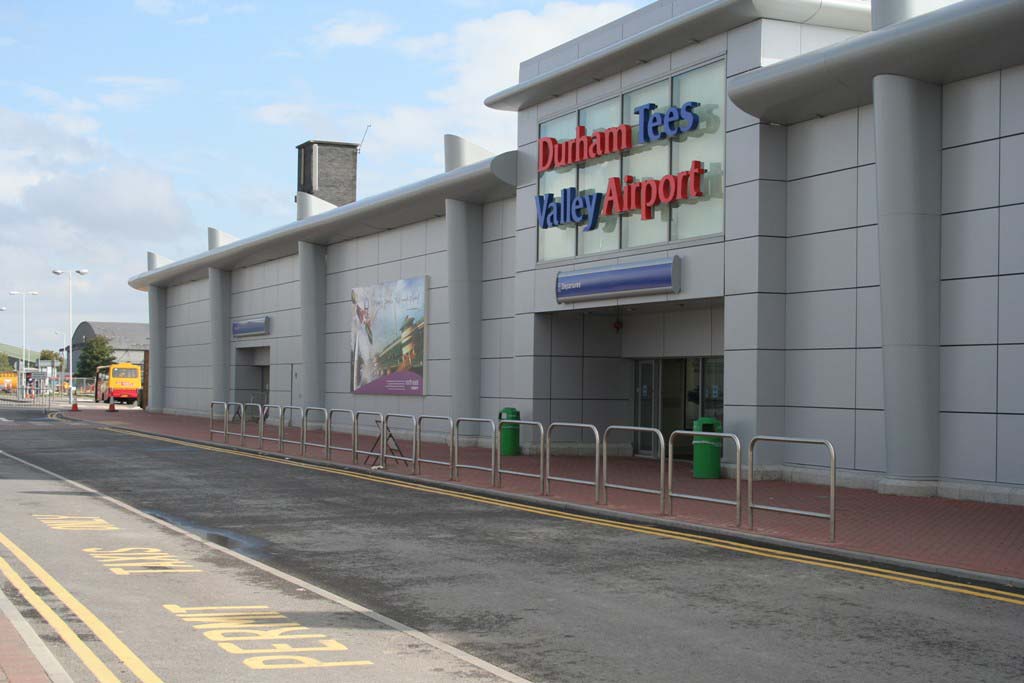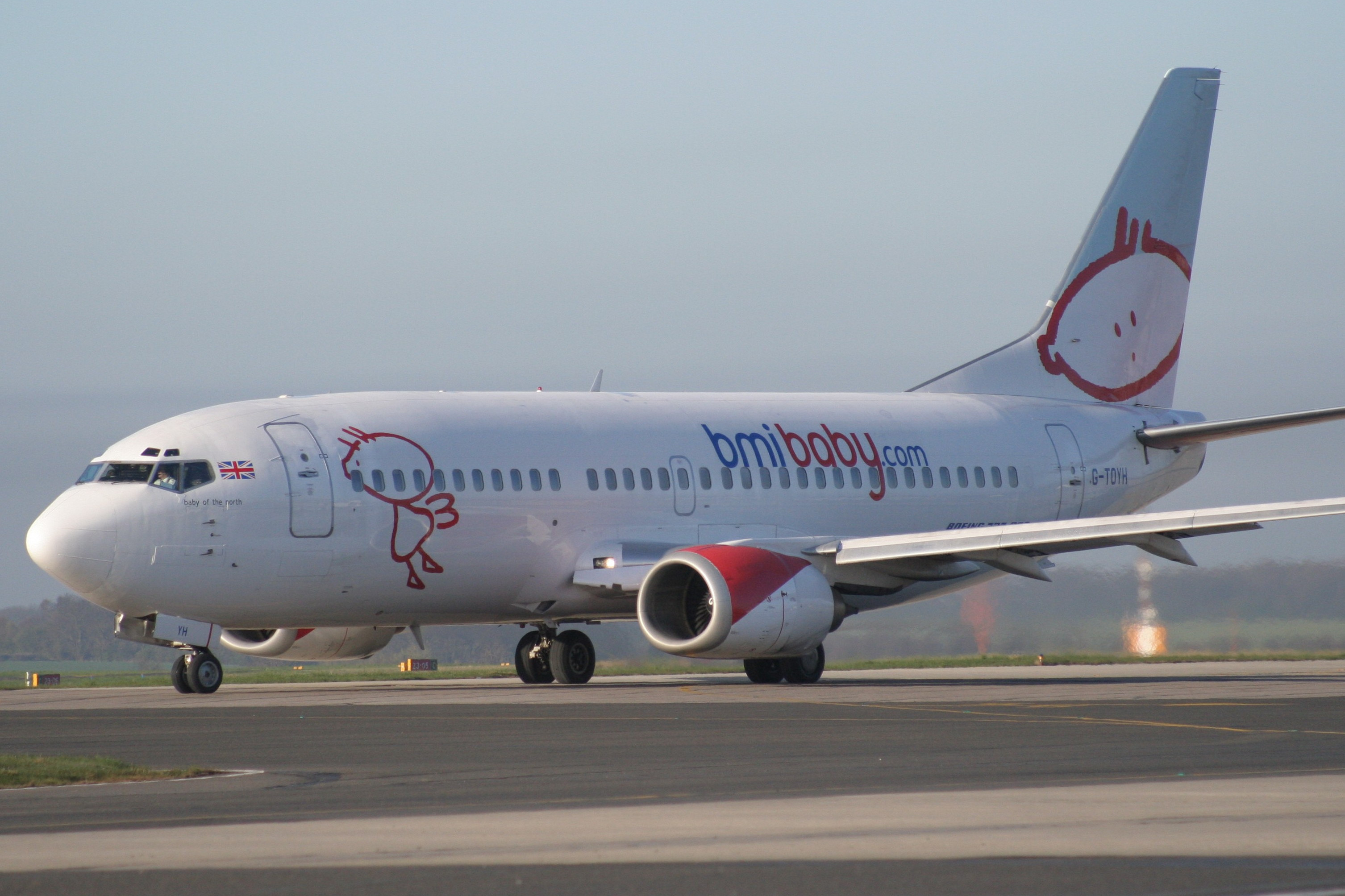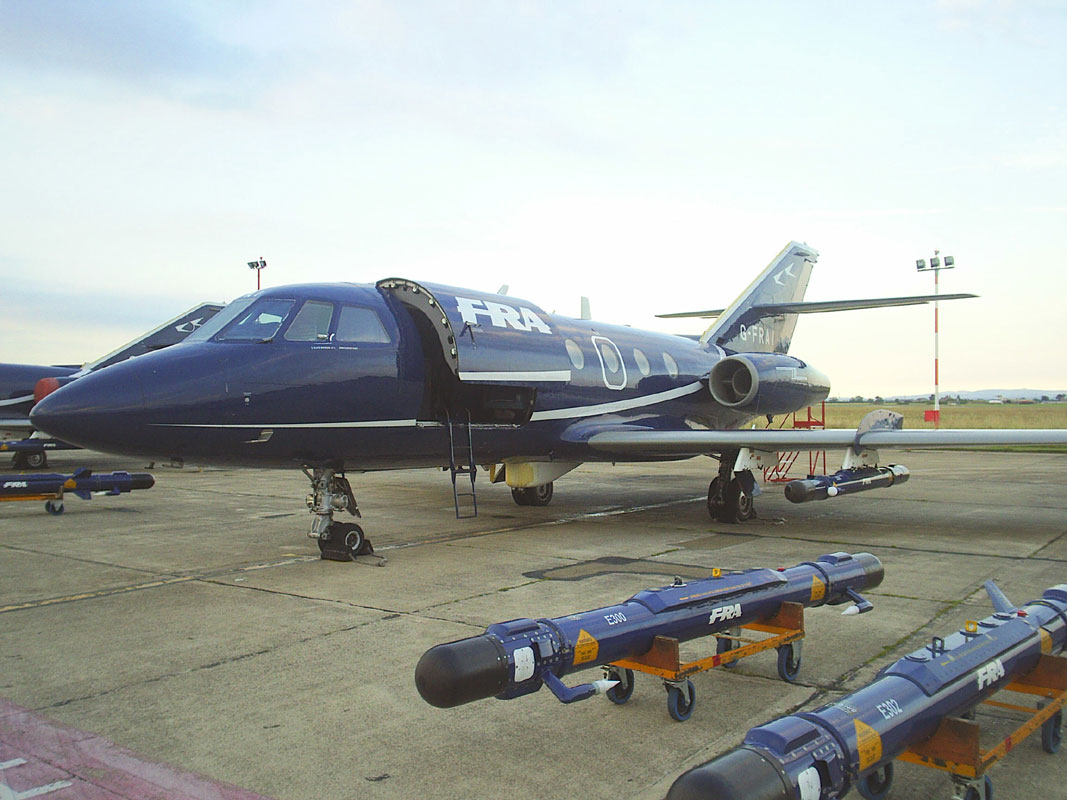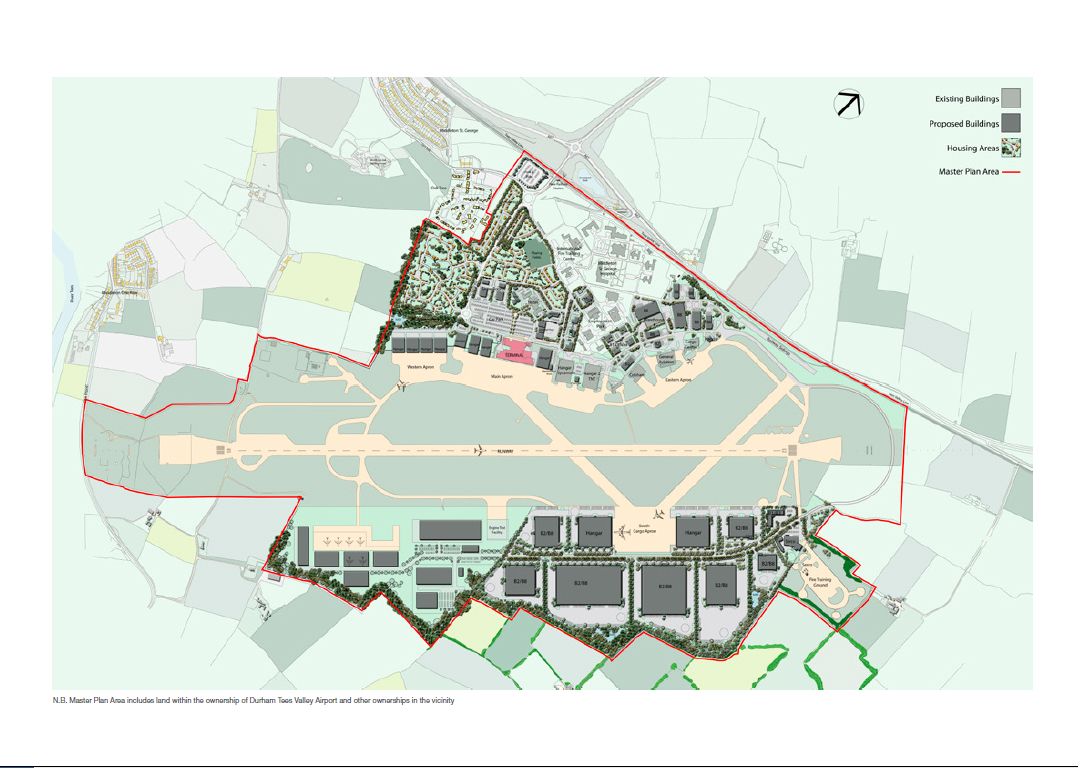By Chris Smith - February 2014
(submitted to Airliner World during early 2014, but not
taken up - thanks to Ian Ellington and Stuart Reid for providing photos)
Durham Tees Valley Airport, situated in the heart of North East England, is about to embark on a journey which will see the airport diversify away from charter passenger flights as part of a major new master plan taking the airport up to the year 2020 and beyond...
Introduction
Durham Tees Valley Airport has
had its fair share of bad luck over the last eight years, losing
over two thirds of its business since 2006 for a variety of
reasons. Ask the airlines and they’ll blame high load factors
but poor yields, ask the staff and they’ll blame poor
management, ask the public and they’ll blame a lingering
conspiracy theory suggesting the owners – who are by trade
Property Developers – only desire the land the airport lies on.
The truth is it’s a mixture of a variety of different reasons,
factor in the poor economy and global recession and suddenly you
find yourself in a near-impossible trading environment. Airport
owners Peel Holdings Plc realise change is necessary and are
about to embark on a journey which will see the airport
diversify away from charter passenger flights as part of a major
new master plan taking the airport up to the year 2020 and
beyond...

Background
Following the departure of the
Royal Air Force in 1964, the site was purchased by the former
Cleveland County Council who invested £340,000 converting it
into a civilian airport, known as Teesside Airport. The first
flight – with Mercury Airlines to Manchester – took place in
April the same year. A further £1.3m was spent building a
passenger terminal, which was opened by Princess Margaretha of
Sweden in 1966.
Over the years, the airport built
up a small, but strong network of scheduled routes, including
the first flight to London Heathrow, which took place in
November 1969 with British Midland, ending only in March 2009
after almost 40 years. In April 1987, the airport followed the
lead set by several other UK airports and added ‘International’
to its name.
During the 1990s, the airport
benefited from the holiday boom, developing a significant
year-round charter programme, with Britannia Airways sending
aircraft as large as the Boeing 767 on some of their many
flights, and Airtours International based a summer-seasonal
Airbus A320 from 1994 right through to the mid-2000s, Britannia,
who were by this point known as Thomsonfly, eventually took over
with a resident Boeing 737-800.
Fall From Grace
It was the low-cost boom that would eventually put the
airport on the map, but also lead to its eventual downfall.
During the early 2000s, the airport dismissed low cost carriers
as a flash-in-the-pan, when the airport did embrace the concept,
they attracted bmibaby. The low cost carriers kept on coming,
FlyGlobespan and Wizz Air launched services to Tenerife South
and Warsaw respectively and Ryanair built on their successful
Dublin service with new links to Rome Ciampino, Barcelona Girona
and Alicante and bmibaby would later add a second based Boeing
737-300. The airport was on a high, with over 900,000
passengers recorded during 2006, it looked impossible not to
break the major 1 million milestone the following year. But the
airport had gone from one extreme to the other, whereas
initially they’d refused to entertain LCCs, now they couldn’t
see past them and it was all about to go horribly wrong.

bmibaby christened one of their Durham Tees Valley based Boeing 737s "baby of the north" (photo © Stuart Reid)
The low cost operators put enough pressure on
Thomsonfly for them to pull their based aircraft, although they
continued serving the airport from alternative bases. The
biggest blow came in late summer 2006, when completely out of
the blue bmibaby announced they would be leaving by early
November despite having only just introduced a second based
aircraft. The official line was despite nearly always full
loads the yields weren’t high enough, but over the years several
different versions have been told, one of which suggested the
airline tried to broker an even better deal with the airport
than the one they already had, and the airport wouldn’t or
couldn’t oblige. It was also bmibaby who in 2004 requested the
airport change its name from Teesside International to Durham
Tees Valley, a move which is still unpopular today and the old
name still gets used by many. Peel would later go on to
successfully sue the airline for breach of contract, receiving
£12m in compensation. The airport was quick to replace the
carrier, with FlyGlobespan almost immediately announcing a two
aircraft operation; however they only lasted just under two
years before leaving to focus on their core Scottish market in
late 2008. Over the next two years, bmi British Midland, Wizz
Air and Ryanair all left, with Eastern Airways cutting services
to Bristol, Brussels and Southampton. Despite all this, Eastern
still have a British Aerospace Jetstream 41 aircraft based,
operating a 4x weekday service to Aberdeen, servicing the oil
and gas industry. Also strongly behind the airport are KLM, who
connect the north-east to the entire globe using their 3x daily
flights to Amsterdam Schiphol.
Elsewhere on the airfield, Durham Tees Flight Training
have recently purchased another on-site flying school, St George
Flight Training to become the largest flight training school in
the north-east, in a further expansion, they’ve recently
purchased a CZAW PS-28 SportCruiser, due for delivery in the
Spring at which point they’ll become the north of England Flight
and Distribution Centre for the type. A new operator to
recently move in is IAS Medical, operating a Beech 200 King Air
and until recently a Piper PA-34 Seneca on medical flights.
Aircraft salvage firm Sycamore Aviation continue to be busy,
just finishing work on an ex-LOT Polish Airlines Boeing
767-300ER and have also recently received two ex-UTair Ukraine
ATR-42s for recycling. Cobham Aviation Services operate five
based Dassault Falcon 20 aircraft in the military training role
alongside the RAF, although another Cobham subsidiary, Cobham
Flight Inspection, operating twin-prop aircraft, have recently
moved out to their main Bournemouth base to reduce costs. The
Great North Air Ambulance and Cleveland Police Air Support Unit
both base Helicopters on-site. Serco have one of the largest
and well respected aviation fire training facilities in Europe
on the airport - the International Fire Training Centre.

C
obham Aviation Services base five Dassault Falcon 20 aircraft at Durham Tees Valley (photo © Chris Smith)Turning The Airport Around
To stem losses, the airport followed the example set by
Blackpool, Newquay and Norwich airports and introduced a
departure fee during November 2010, known as the Passenger
Facility Fee. The £6 fee was badly received by both the press
and public, although the subsequent 15% drop in annual passenger
figures was less than many had anticipated. The fee was also
one reason for Ryanair axing their only remaining service to
Alicante – who notoriously hate such expenses.
Durham Tees Valley has always trailed behind it’s
larger north-east neighbour, Newcastle International Airport,
now more so than ever, but DTVA is arguably better located,
situated perfectly to serve the Newcastle, Sunderland,
Darlington, Durham and Middlesbrough areas as well as North
Yorkshire and boasting a larger catchment area than it’s rival
in both the one and two hour travel time, with some 7.12 million
people in the latter bracket compared to Newcastle’s 4.2
million.
The Master Plan
Peel have doggedly pursued new airlines and business,
as well as trying to build up ancillary services such as
executive aviation, general aviation and aircraft recycling, so
that if they ever did build passenger services back up, they had
something to fall back on should they ever lose it again. One
firm Peel chased was Thomson Airways, who were still as loyal as
ever with seasonal flights, in fact, they’d just announced
another to Ibiza for summer 2014, but there was one problem.
Two charter flights per week for six months of the year is not
profitable, as the staffing levels and other associated services
required to handle these two charter flights were triple that of
the scheduled routes to Aberdeen and Amsterdam by Eastern
Airways and KLM, but these staffing levels and services had to
be maintained 24 hours a day, seven days a week – all for about
three or four hours worth of flights per week for just six
months of the year. This led to the airport losing a three
figure sum per passenger on charter flights! It’s no secret
that the airport is losing just shy of £4m per year, and no
matter how deep the owners pockets may be, no business can
justify sustaining a loss and something had to give, so in
October 2013, the decision was made to axe all charter flights
with the exception of a seasonal Flybe service to Jersey which
survived thanks to the smaller aircraft size – an Embraer 175.
Annual Christian pilgrimage charter flights to Lourdes are
looking doubtful, as are regular military troop flights. The
cutting of charter flights came as part of a wider master plan
for the airport, which will take the airport up to the year 2020
and beyond.

The airport is now pursuing additional scheduled
routes, a difficult task given the current industry climate.
The terminal building will be reduced in size, with 40% due to
be mothballed. The airport are also looking at non-passenger
aviation, existing on-site companies Cobham, Serco, and Sycamore
are all featured heavily in the master plan. In addition, new
companies are being sought after, with a new fixed wing operator
in talks to start-up operations. The master plan itself has
been received with mixed reviews, primarily due to bad press
reporting which focused on a housing development which makes up
only a small percentage of the plan and is on land unsuitable
for aviation use. In the eyes of the press and public, building
houses on the site confirms the conspiracy theory that suggests
Peel only want the land and not the airport, what they fail to
realise is the vast majority of UK airports either already have,
or are in the process of building residential and industrial
developments to supplement the airport income, as these days
commercial aviation on it’s own rarely delivers a profit.
Furthermore, if Peel did want the land, it’s worth a lot more
to them with a successful and active transportation hub in the
middle of it.
The master plan, released in November 2013, has just
finished a consultation programme, the airport will now take
onboard the comments and suggestions provided by the public and
businesses before releasing a final draft around March. In the
weeks and months following this, the airport intends to rebuild
confidence in both the local population, but more importantly,
with the airlines. The airport have found during the
consultation process the business community have welcomed and
backed the plan unanimously, whereas the general public have
been more critical until they’ve taken the time to listen and
understand the plan, at which point they’ve begun to feel a lot
more positive about it.
The plan will see the airport sell off land to the
north of the current site for housing development, with the
money raised from the sale – under the terms of a ‘section 106’
agreement which means the airport has a legal obligation to
reinvest the finance gained back into the airport – being used
to erect new hangars either side of the current terminal
building. Locals have raised concerns about aircraft noise and
houses not mixing, but during their research for the master
plan, the airport learned most aircraft noise is concentrated to
the areas that lie at either end of a runway, and the planned
hangars have been positioned in such a way that they will act as
a sound barrier to the new housing estate, but should any new
residents still complain, it will come down to the fact the
airport was there first. There are plans to accommodate a
number of shops and retail outlets within the terminal building
in the hope that they may form a mini ‘town centre’ for the new
housing estate as well as the existing villages. The first of
any new hangars built are rumoured to be for Weston Aviation who
are General Aviation handling agents. Weston have grown
executive traffic visiting the airport substantially over recent
years and now barely a day goes by without one or more private
jet movements, but currently there is no hangarage available for
larger GA aircraft.
The Future
In the longer term, further construction on the north
side will see industrial units erected and potentially further
hangars subject to the demand for the initial ones. A rail
freight siding could be constructed to help attract growth in
air cargo movements and there is an option to build a passenger
rail station closer to the terminal than the existing one, that
would also be well positioned to serve the local villages.
There is also a substantial development planned on 250 acres of
spare land south of the runway. In recent years, many
developments have been planned on the south-side with none
reaching fruition, and as such there is scepticism about this
aspect of the plan. Peel have indicated the south side
development is reliant on external investment and they are
unlikely to fund it themselves, they have already had two bids
to the Government’s Regional Growth Fund for £5.9m and £4.65m
respectively turned down which would have been used to construct
access roads to the site as well as installing utilities such as
gas and electric. A third bid for the spring will be reviewed
should the Government decide to launch a third round of the RGF.
The future is not so
much about commercial flights as it is about non-passenger
aviation, Weston Aviation may have grown executive traffic
substantially, but airports of Durham Tees Valley’s size usually
have a cache of resident private jet/prop aircraft and
operators, and this is the type of business the airport will now
pursue. Given the airports ideal location just off the
north-east coast, oil rig helicopters could be another
possibility. Just a few short years from now, Durham Tees
Valley certainly has the potential to become the busiest it’s
ever been – perhaps not in the eyes of the public who will
continue to wonder where the Airbus and Boeings are taking them
off on their holidays – but certainly from other areas.
Airport Background
The airport began life in 1941 as an RAF
Station, known as RAF Middleton-St-George, though it’s a common
misconception the base was originally christened RAF Goosepool,
which was the names of the two farms the base was built on.
The airfield was built as a Bomber
Command Station and the first flight was by an Armstrong
Whitworth Whitley which arrived from RAF Dishforth on April 9th,
1941. The first squadron to arrive was No. 78 with Whitleys,
joined by No.76 in June 1941 with Handley Page Halifaxes.
In 1943 the station was allocated to No.
6 Group of the Royal Canadian Air Force, who moved three
squadrons in, No.s 419, 420 and 428 using Vickers Wellingtons,
Halifaxes and Avro Lancasters.
Post-war, the RAF moved back in, with
three training squadrons as well as squadrons using Gloster
Javelin’s and Meteor’s, Hawker Hunter’s and the aircraft most
often associated with the airfield during its military days, the
English Electric Lightning.
The RAF moved out in 1964 and the site
was purchased by Cleveland County Council.
Ownership
Having purchased the site from the Air
Ministry in 1964, Cleveland County Council owned the airport
solely until 1974 when Durham County Council took a stake. 1996
saw Cleveland County Council abolished, and the shares were
divided up between a total of six local authorities; these being
the respective councils of Darlington, Durham, Hartlepool,
Middlesbrough, Redcar & Cleveland and Stockton-on-Tees.
In 2002, the councils felt they could no
longer support the airports growth potential and a private
investor was sought. The successful candidate was Peel Holdings
Plc, and through their Peel Airports subsidiary, they took on a
75% shareholding in the airport, with the remaining 25% staying
with the six local authorities.
In 2010 Peel Holdings announced the sale
of a 65% stake in their airports division to Canadian firm
Vancouver Airport Services (now Vantage Airport Group).
Peel/VAS, under the terms of their
original purchase agreement with the councils, served a dilution
notice in December 2011, seeing their stake rise to 89%. During
the same month, they placed the airport into administration and
began a sale process. In February 2012, Peel Holdings Plc
purchased the airport back from the Canadians under a new
subsidiary, Peel Investments (DTVA) Ltd.
FoDTVA
On September 3rd, 2012, a volunteer
support group named FoDTVA (“Friends of Durham Tees Valley
Airport”) was launched. Run by a committee of aviation
enthusiasts and members of the public, with support from the
airport management and owners, their aim is to promote, support
and assist Durham Tees Valley Airport whenever and wherever
possible. They charge a £12.00 per year membership fee to cover
the costs of running the group, with any excess being donated to
on-site charity the Great North Air Ambulance. The scheme is
based on existing, established and similarly-named schemes at
Peels other airports, Robin Hood Doncaster Sheffield and
Liverpool John Lennon.
One of FoDTVAs first projects was to
bring back an air show to the airport following a 24-year
hiatus, but due to a loss of operational support, the show was
cancelled.
Airport Statistics
Owners
Peel Investments (DTVA) Ltd (89%)
Local Authorities (11%)
Operator
Durham Tees Valley Airport Ltd
Serves
North East England
North Yorkshire
IATA:
MME
ICAO:
EGNV
Runways
(active)
05/23, 7,516ft x 151ft (2,291m x 46m), asphalt surface, CAT I
ILS
Runways
(disused)
01/19, 3,300ft x 151ft (1,006m x 46m), asphalt surface
(later reduced to 2,428ft x 59ft (740m x 18m))
10/28, 4,200ft x 151ft (1,280m x 46m), asphalt surface
Position
54° 30.55’N, 001° 25.76’W
Elevation
120FT (36.5m)
Frequencies
Durham Tower: 119.800
Durham Radar: 118.850
Durham Director: 128.850 (when instructed)
Durham ATIS: 132.375
Servisair: 130.600
Weston Aviation: 129.700 (currently not in use)
Cobham: 122.350
Fire Service: 121.600
Website:
www.dtva.co.uk
Airlines
Eastern Airways – Aberdeen Int’l
Flybe – Jersey (summer only)
KLM Cityhopper – Amsterdam Schiphol
Operators
CamAir Freight Solutions
Cleveland Police Air Support Unit
Cobham Aviation Services
Durham Tees Flight Training
Great North Air Ambulance
IAS Medical
Serco IFTC
Sycamore Aviation
TNT Express (road freight only)
Weston Aviation
Traffic Statistics
|
|
No. of Passengers |
Aircraft Movements |
Cargo (tonnes) |
|
2009 |
289,464 |
25,208 |
298 |
|
2010 |
224,673 |
20,756 |
0 |
|
2011 |
192,410 |
20,879 |
3 |
|
2012 |
164,826 |
17,938 |
0 |
|
2013 |
|
|
0 |
